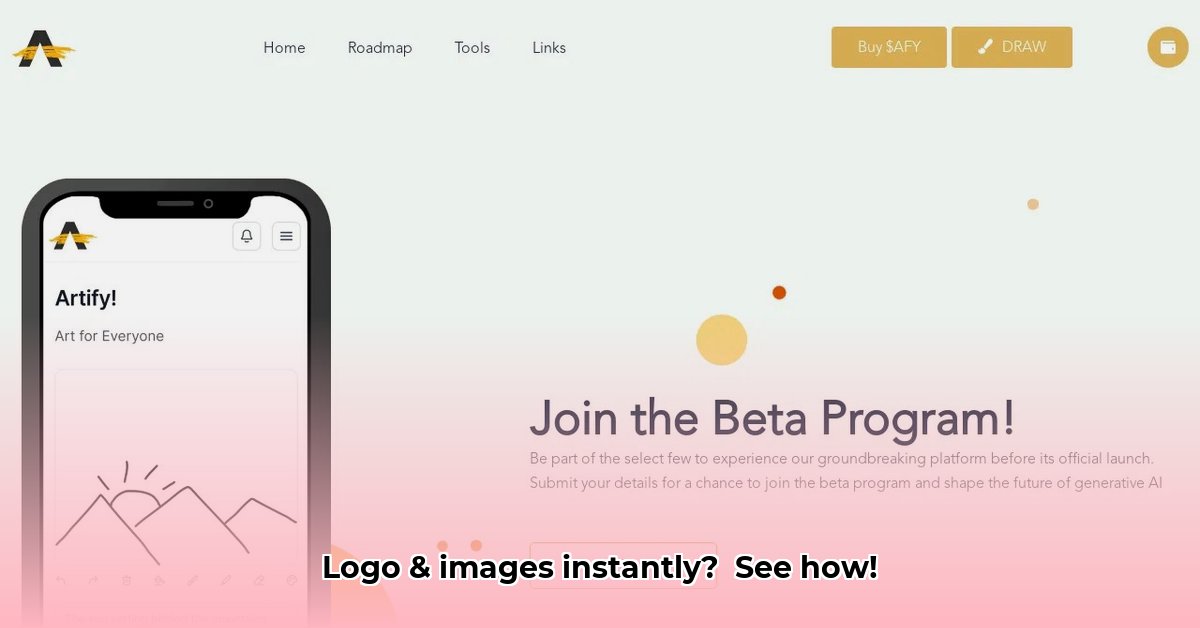
The design landscape is undergoing a rapid transformation, fueled by the rise of AI-powered design tools. Artify.gg is a prominent player in this burgeoning market, promising to democratize logo and image creation. But does its technology deliver on its promises, and how does it stack up against the competition? This in-depth analysis explores Artify.gg's capabilities, market positioning, ethical considerations, and future prospects.
How Artify AI Works and Its Business Model
Artify.gg simplifies the design process by leveraging artificial intelligence. Users input keywords, style preferences, and other relevant details, and the AI generates various design options. This streamlined approach aims to reduce the time and cost associated with traditional design methods. The platform primarily employs a subscription-based model, offering tiered access to features and design credits. This model is common in the SaaS (Software as a Service) industry, but the value proposition hinges on the quality and uniqueness of the AI-generated designs. A critical question remains: does the premium "Advanced AI" truly justify the higher cost? Further analysis of the underlying algorithms and data sets are needed for a comprehensive evaluation.
Isn't it fascinating how technology is changing the creative process? Artify.gg is a prime example of this shift, but do the results match the hype? A key comparison point is the quality of AI-generated designs compared to human-created designs. This comparison is critical for evaluating the true potential of Artify.gg.
The Competitive Landscape: Navigating the AI Design Market
The AI design tool market is becoming increasingly crowded. Numerous platforms offer similar functionalities, making direct comparisons challenging. A lack of transparency regarding specific algorithms and training data hinders a comprehensive competitive analysis. The situation is akin to comparing automobiles without knowing their engine specifications; superficial observations alone do not suffice. Greater transparency from industry players is crucial for informed market assessments.
How does Artify.gg differentiate itself from competitors such as Brandmark, Looka, and Tailor Brands? A crucial factor is the quality and originality of its outputs. These platforms often offer similar base features; therefore, nuanced differences in the AI models, data sets and user interface become critical.
Ethical Considerations: Responsible AI Development
The use of AI in design raises ethical questions. AI models trained on biased data can perpetuate societal biases in generated designs. Artify.gg, along with its competitors, must actively address this risk through careful curation of training data and implementing mechanisms to detect and mitigate bias. Similarly, data privacy is paramount. Compliance with regulations like GDPR and CCPA is essential to build user trust.
"The ethical implications of AI design tools are significant," states Dr. Anya Sharma, Professor of AI Ethics at the University of California, Berkeley. "Companies must prioritize fairness, transparency, and accountability in their algorithms and data handling practices to prevent the perpetuation of harmful biases."
Actionable Intelligence: Strategies for Stakeholders
The AI design tool market presents strategic opportunities and challenges. The following outlines actionable steps for key stakeholders:
Artify.gg Developers: Enhance usability, expand training datasets to improve AI performance, refine AI algorithms, and improve customer support. Long-term strategies include developing advanced features (such as video generation) and forging strategic partnerships with large businesses.
Designers and Freelancers: Experiment with Artify.gg to integrate it into existing workflows, exploring creative ways to leverage AI to enhance design services. Adapt to changing market dynamics, offering unique skills alongside the use of AI tools.
Businesses: Test Artify.gg on pilot projects to assess cost-effectiveness compared to traditional methods. Integrate AI-generated assets into broader marketing strategies to reduce reliance on extensive design teams.
Investors: Conduct thorough market assessments to gauge competition and long-term growth potential. Assess regulatory risks and their potential impact on the viability of investments.
Risk Assessment: Identifying Potential Pitfalls
Artify.gg and its competitors face substantial risks:
| Risk Factor | Probability | Impact | Mitigation Strategy |
|---|---|---|---|
| Intense Competition | High | High | Continuous AI improvement, focusing on niche markets, strong marketing |
| Data Privacy Concerns | Medium | High | Robust security measures, strict compliance with data protection regulations |
| AI Bias in Designs | Medium | Medium | Diverse datasets, bias detection and correction tools |
| User Adoption Challenges | Medium | Medium | User-friendly interface, excellent customer support, effective marketing strategies |
| High Model Training Costs | Medium | Medium | Efficient training processes, cost-effective cloud services |
The Regulatory Landscape: Navigating Legal Uncertainties
The legal landscape surrounding AI-generated designs remains unclear. Copyright and intellectual property rights are key issues; the ownership of AI-generated content is a complex legal matter. Staying abreast of evolving regulations and legal precedents is crucial for all stakeholders.
Conclusion: A Vision of the Future
Artify.gg and similar platforms represent a significant advancement in design technology. However, responsible development and transparent practices are crucial to mitigating ethical and legal concerns. Continuous refinement of AI models, coupled with a commitment to ethical considerations, will determine the success and long-term viability of this technology. The future of AI in design hinges on collaborative efforts to address these challenges and harness the technology's full potential.
1https://eliteai.tools/tool/artifygg/alternatives
⭐⭐⭐⭐☆ (4.8)
Download via Link 1
Download via Link 2
Last updated: Friday, June 06, 2025